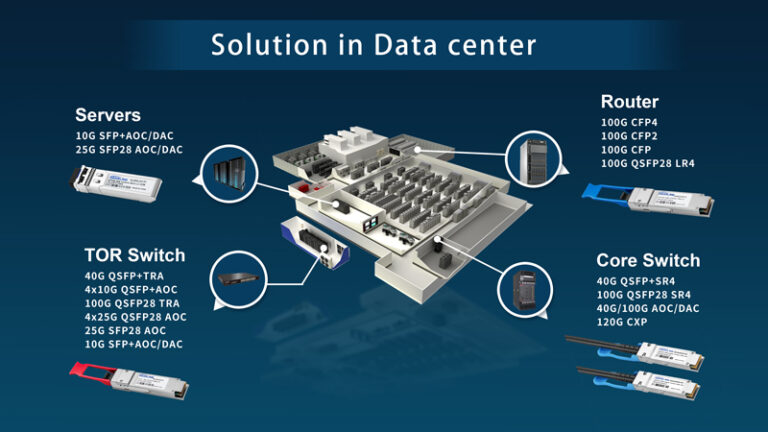In the fast-paced world of data center networking, the demand for high-performance solutions is ever-present. One innovative approach to meet this demand is the utilization of 100G modules split into four 25G modules. In this blog post, we will explore the practical applications of this approach in data center networks, including high-performance computing, cloud computing, and big data processing. We will also discuss how the flexibility of modular design supports various business requirements and network architectures.Using a 100G module split into 4x25G modules can significantly enhance data center network performance and flexibility.
High-Performance Computing (HPC)
High-performance computing (HPC) requires fast and reliable network infrastructure to handle complex computational tasks efficiently. The use of 100G modules split into four 25G modules provides a scalable solution for HPC environments. By leveraging parallel processing capabilities, these modules can distribute workloads across multiple nodes, enhancing computational performance and accelerating data processing tasks. Whether it’s scientific simulations, financial modeling, or artificial intelligence algorithms, the modular design of 100G modules enables data center operators to scale their HPC infrastructure according to workload demands. By splitting the 100G module into four separate 25G modules, data center operators gain greater flexibility in network configurations. They can allocate bandwidth according to specific workload requirements, optimizing resource utilization.
Cloud Computing
Cloud computing relies on robust and flexible networking solutions to deliver scalable and on-demand services to users. The deployment of 100G modules split into four 25G modules aligns perfectly with the requirements of cloud environments. These modules offer the agility and scalability needed to support dynamic workloads and rapidly growing data volumes. By leveraging modular design principles, cloud providers can customize their network configurations to meet the diverse needs of different applications and services. Whether it’s hosting virtual machines, running containerized workloads, or managing software-defined networks, the versatility of 100G modules enables seamless integration with cloud computing platforms.
Big Data Processing
Big data processing involves collecting, storing, and analyzing vast amounts of data to extract valuable insights and drive informed decision-making. The use of 100G modules split into four 25G modules facilitates efficient data transfer and processing in big data environments. These modules enable high-speed connectivity between data storage systems, processing clusters, and analytics applications, ensuring smooth data workflows and minimal latency. With modular design architecture, data center operators can scale their infrastructure horizontally by adding more modules as data volumes grow, ensuring uninterrupted performance for big data processing tasks.
Flexibility and Scalability
One of the key advantages of using 100G modules split into four 25G modules is the flexibility and scalability they offer. Data center operators can tailor their network configurations to suit specific business requirements and network architectures. Whether it’s deploying spine-leaf topologies for scalable architectures or implementing high-density server deployments for resource-intensive workloads, the modular design of 100G modules enables agile and cost-effective network expansion. Additionally, the ability to mix and match different module types allows for seamless integration with existing infrastructure and future-proofing against evolving technology trends.
Conclusion
In conclusion, the deployment of 100G modules split into four 25G modules represents a versatile and scalable solution for data center networks. From high-performance computing to cloud computing and big data processing, these modules offer the flexibility and performance needed to support a wide range of applications and services. By leveraging modular design principles, data center operators can build agile and cost-effective network infrastructures that can adapt to changing business needs and technological advancements. As data volumes continue to grow and demand for faster processing speeds increases, the use of 100G modules split into four 25G modules will play a crucial role in driving innovation and efficiency in data center networking.
